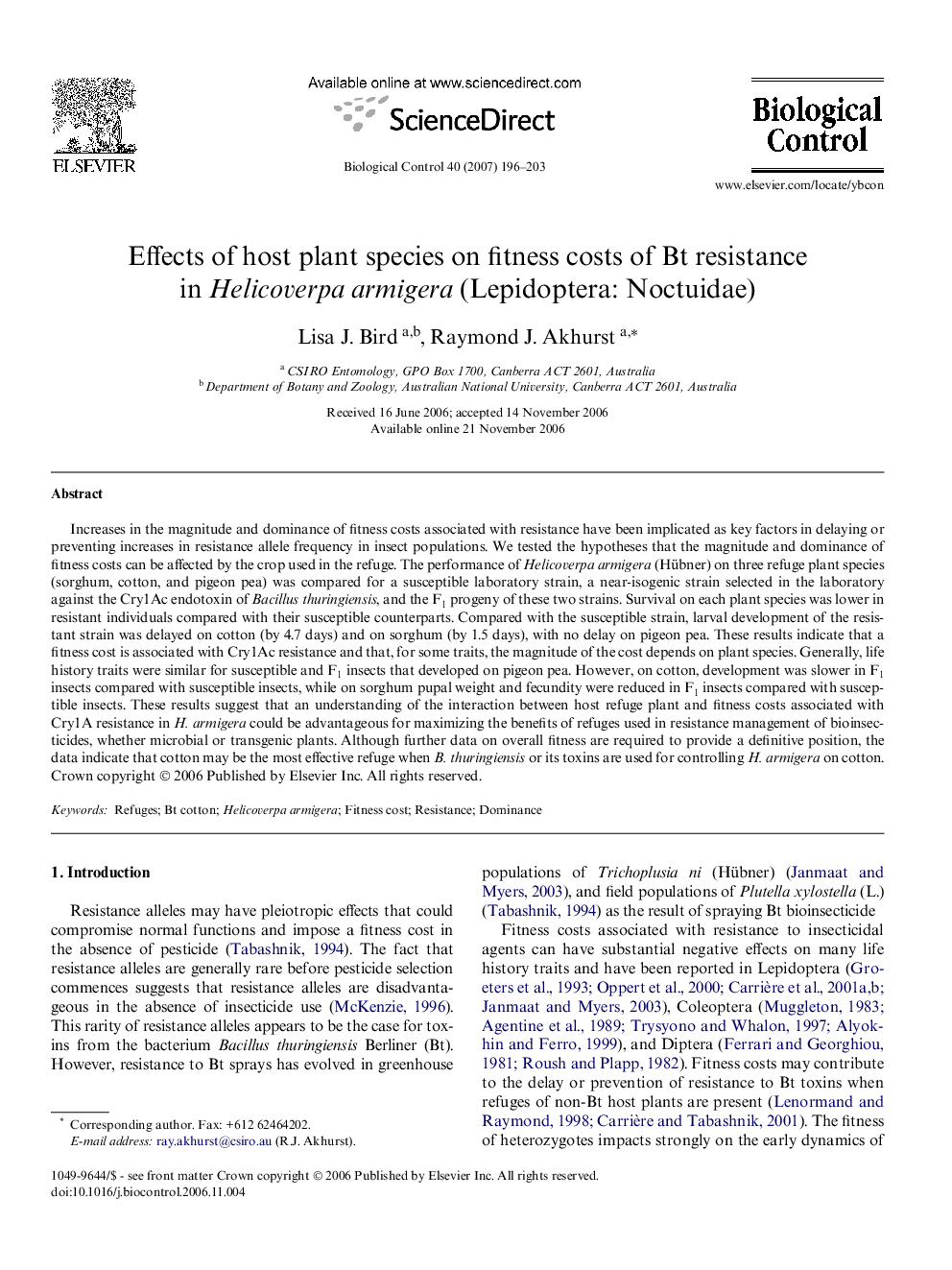| کد مقاله | کد نشریه | سال انتشار | مقاله انگلیسی | نسخه تمام متن |
|---|---|---|---|---|
| 4505213 | 1321133 | 2007 | 8 صفحه PDF | دانلود رایگان |
عنوان انگلیسی مقاله ISI
Effects of host plant species on fitness costs of Bt resistance in Helicoverpa armigera (Lepidoptera: Noctuidae)
دانلود مقاله + سفارش ترجمه
دانلود مقاله ISI انگلیسی
رایگان برای ایرانیان
کلمات کلیدی
موضوعات مرتبط
علوم زیستی و بیوفناوری
علوم کشاورزی و بیولوژیک
علوم زراعت و اصلاح نباتات
پیش نمایش صفحه اول مقاله

چکیده انگلیسی
Increases in the magnitude and dominance of fitness costs associated with resistance have been implicated as key factors in delaying or preventing increases in resistance allele frequency in insect populations. We tested the hypotheses that the magnitude and dominance of fitness costs can be affected by the crop used in the refuge. The performance of Helicoverpa armigera (Hübner) on three refuge plant species (sorghum, cotton, and pigeon pea) was compared for a susceptible laboratory strain, a near-isogenic strain selected in the laboratory against the Cry1Ac endotoxin of Bacillus thuringiensis, and the F1 progeny of these two strains. Survival on each plant species was lower in resistant individuals compared with their susceptible counterparts. Compared with the susceptible strain, larval development of the resistant strain was delayed on cotton (by 4.7 days) and on sorghum (by 1.5 days), with no delay on pigeon pea. These results indicate that a fitness cost is associated with Cry1Ac resistance and that, for some traits, the magnitude of the cost depends on plant species. Generally, life history traits were similar for susceptible and F1 insects that developed on pigeon pea. However, on cotton, development was slower in F1 insects compared with susceptible insects, while on sorghum pupal weight and fecundity were reduced in F1 insects compared with susceptible insects. These results suggest that an understanding of the interaction between host refuge plant and fitness costs associated with Cry1A resistance in H. armigera could be advantageous for maximizing the benefits of refuges used in resistance management of bioinsecticides, whether microbial or transgenic plants. Although further data on overall fitness are required to provide a definitive position, the data indicate that cotton may be the most effective refuge when B. thuringiensis or its toxins are used for controlling H. armigera on cotton.
ناشر
Database: Elsevier - ScienceDirect (ساینس دایرکت)
Journal: Biological Control - Volume 40, Issue 2, February 2007, Pages 196-203
Journal: Biological Control - Volume 40, Issue 2, February 2007, Pages 196-203
نویسندگان
Lisa J. Bird, Raymond J. Akhurst,